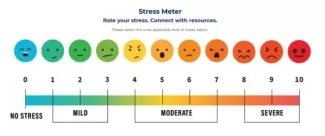Why It Matters
The COVID-19 pandemic is exacerbating existing issues with health care professional burnout and joy in work. To highlight the multiple levels at which this crisis must be addressed, IHI published A Guide to Promoting Health Care Workforce Well-Being During and After the COVID-19 Pandemic. The excerpt below from the guide provides specific examples of what can be done on the organizational level.
Health care organizations need to leverage and build on existing support systems and behavioral health services, implementing a broad array of behavioral health supports and services available to all health care workers. Ideally, organizations create processes to share learning throughout the health care system and with government at all levels, and they advocate for a national research agenda for disaster-related behavioral health support. Below is some specific guidance for organizations seeking to institute a peer support program, which can provide invaluable support for workforce well-being.
- Be proactive: Peer support programs need to be proactive and reach out to workers. It’s unfair, and ineffective, to put the burden on individuals to seek help. Make the program optout, not opt-in.
- Integrate outreach into existing clinical processes: Check in during rounds or existing team meetings. Ask, “How was the day (or week) for you?” If it was particularly difficult, facilitate discussion and connection with peer support.
- Distribute the load to lessen burnout: Make sure you don’t burn out the colleagues who provide peer support. Implement a rotating schedule; ask people to be available in different circumstances.
- Co-design the peer support program: These programs can be developed by small steering committees that include representatives from across the workforce.
- Recognize peer support’s limits: Peer support should provide psychological first aid, not counseling or professional mental health services. Have a referral process to professional counseling; develop a list of mental health providers who are willing to work with health care providers in your community.
- Effectively publicize the program: Determine which communication and outreach mechanisms will be most effective to engage workers in the program. One health system, for example, partnered with its risk management department to refer individuals to the program. Talk about the program in lots of different venues. Put information about the program in staff break rooms.
- Support the supporters: Set up a regular (e.g., quarterly) meeting for peer support volunteers to discuss their experiences and problem-solve together.
- Perfection is the enemy of the good: Determine the minimum requirements to establish a peer support program and get started on a small scale. Test different aspects and improve the program over time to meet workers’ specific needs.
The following are some additional specific actions other health care organizations have found helpful for addressing workforce well-being:
- Staff “safety hub” portal: An internal website where workers can get answers to their questions and that also provides resources organized by basic needs, psychosocial health, and just-in-time resources
- Frontline relief center: Snack stations and well-being centers for frontline staff to recharge
- Screening, referrals, and resilience training and coaching
- Create a new position of chief wellness officer, with a mandate to oversee, prioritize, and coordinate system-wide efforts to improve workforce well-being
- Resilience rounds: At the end of shift, an opportunity for staff to share brief lessons learned
Stress meter: An interactive tool from Providence St. Joseph Health that refers workers to resources based on needs and preferences.
Image
Figure 1. Providence St. Joseph Health Stress Meter
- Behavioral health concierges: Confidential support services for health care workers and their families (with appointments via video or phone), including counseling, care navigation, self-help tools, and other resources
The COVID-19 pandemic presents an opportunity to make fundamental and lasting change to better support health care workers’ health and well-being and foster a thriving workforce. While all health care organizations may grapple with their own unique challenges, we hope that A Guide to Promoting Health Care Workforce Well-Being During and After the COVID-19 Pandemic provides actionable ideas that all can implement to promote workforce well-being.
You may also be interested in:
How Leaders Can Promote Health Care Workforce Well-Being
4 Unconventional Ways to Support the Health and Well-Being of the Health Care Workforce
